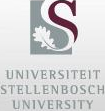Stellenbosch 肆客足球 (SU) today officially opened the Medical Morphology Learning Centre (MMLC), establishing Africa's largest and most technologically advanced facility of its kind. The state-of-the-art centre reimagines health sciences education, moving beyond traditional teaching methods to create an immersive, interactive learning environment.
Located within SU's Biomedical Research Institute at the Faculty of Medicine and Health Sciences (Tygerberg Campus) in Cape Town, the MMLC blends cutting-edge technology with traditional anatomical resources, offering students access to human anatomy through multiple learning modalities.
“With the MMLC, we've reimagined health sciences education, changing learning from a passive exercise into an interactive immersive journey," says Prof Karin Baatjes, Vice-Dean: Learning and Teaching in SU's Faculty of Medicine and Health Sciences. “This cutting-edge training facility uses the latest technology to transform how students connect with the complexity of the human body."
The centre includes virtual and augmented reality (VR/AR) systems, interactive touch tables enabling 3D anatomical exploration, and advanced 3D printing facilities for creating tactile models used in surgical planning and health sciences education. The VR headset enables students to perform virtual dissections, manipulate anatomical structures in real-time, and examine internal systems from multiple perspectives.
Prof Simone Titus-Dawson, Digital Education and Innovation lead at SU's Department of Health Professions Education, emphasises the pedagogical transformation: “By integrating the latest technology, we've made learning active and intuitive. Students can explore anatomy in multi-dimensional spaces, reinforcing clinical relevance and improving retention."
Beyond its technological capabilities, the MMLC maintains extensive traditional resources, housing over 1,300 ethically sourced human specimens spanning normal and pathological morphology, alongside high-quality microscopes and curated histology slide collections for detailed tissue examination.
Prof Gerhard Walzl, Head of the Division of Immunology, highlights the centre's broader impact: “The MMLC serves as a collaborative hub where health sciences professionals, researchers, clinicians, and educators converge. It stimulates interdisciplinary collaboration while advancing medical research and clinical practice."
The facility's comprehensive approach addresses evolving educational needs in an increasingly digital healthcare landscape. Prof Baatjes notes: “This centre positions us to create future-ready health professionals who can navigate both traditional medical knowledge and emerging technologies, ensuring they're equipped for tomorrow's healthcare challenges and opportunities."

